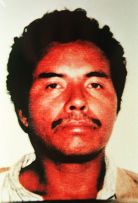In the Netflix original film “Catching Killers: End of the Line: The Railroad Killer,” Dr. Claudia Benton is shown being viciously attacked inside her West University Place, Texas, house in December 1998 before being killed. Inside her home, the police discovered many pieces of forensic evidence that assisted them in identifying the culprit, who turned out to be a Mexican serial killer suspected of up to 23 murders that occurred in the US and Mexico during the 1990s. Here is what we know about the case in case you want to learn more.
How Did Claudia Benton Die?
On May 15, 1959, Dr. Claudia Gabriela Subiria Franco Benton was born in Lima, Peru’s Provincia de Lima. In December 1998, she married George Benton and gave birth to twin children while residing in their West University Place home in Harris County, Texas. At Texas Children’s Hospital, the 39-year-old was a paediatric geneticist and researcher who focused on identifying children disorders. Emilia Benton, her twin sister, and George were in Arizona visiting family on December 16, 1998.
Claudia’s presentation at Baylor University the following day prevented her from travelling with her family. The 39-year-old doctor, who had spent the entire day working on her lecture, reportedly felt exhausted and dozed off on her bed as she watched television. She therefore was not aware of the burglar who immediately entered her residence on West University Place, which is close to train lines. The young mother was then attacked by the intruder with a kitchen knife, beaten with a bronze statue, and sexually assaulted; as a result of her severe injuries, she died.
When Claudia didn’t show up for her Baylor University lecture, her coworkers called George, who was shocked to hear the news. He stated in court, “We had two telephone lines into the house and a pager, so I was pretty alarmed.” When the cops checked on her health at home, they discovered her dead. The pager was discovered outside the bedroom where Claudia was murdered. Police sources claim that she had 19 blunt force head injuries, including three depression fractures to her skull, and had been repeatedly stabbed in the back and hands.
Her postmortem report revealed that she had also been sexually abused, and many knife wounds and blunt force injuries were found to be the cause of death. Even worse, according to the medical examiner’s testimony, Claudia suffered three stab wounds that penetrated her front body, breaking many ribs and crushing her lungs. While fending off her attacker, she also sustained bruises and two broken bones in her right arm. The tools used were already discovered by the investigators: a bloodied butcher knife and a figurine coated in blood.
Who Killed Claudia Benton?
According to accounts, Claudia’s house had a banjo, a guitar, a stereo, and a lot of jewellery missing. In addition, the offender had broken her Jeep’s steering column and jump-started the vehicle before taking it from her garage. Therefore, news of her horrible death circulated widely in Houston and around the country. The Houston Police Department handled the majority of the forensic work at the crime scene. That’s because experts claim that the West University Place (WUP) Police Department lacked the necessary tools to handle such a complex case.
Latent fingerprints were later discovered by Houston Police Department investigators on objects in Claudia’s home and on pieces of the Jeep’s damaged steering column in the garage. On December 18, 1998, the San Antonio police located Claudia’s stolen Jeep in a parking lot of a motel in their neighbourhood close to railroad tracks. They examined the Jeep, took fingerprints, and submitted them to Texas AFIS, a renowned automated fingerprint identification system.
Rafael Resendez-Ramirez was using the alias Carlos Cluthier Rodriguez, but it was later discovered that his real name is Angel Leoncio Reyes Recendis. The police discovered a response from the Texas AFIS stating that the fingerprints matched those of Carlos Cluthier Rodriguez. In 1993, ngel was caught in Carson County, Texas, when he stole a car and tried to flee the police. In order to collect Angel’s old fingerprints, the authorities got in touch with the Carson County Sheriff’s Department.
In order to look for other matches, the Texas Department of Public Safety later sent Angel’s fingerprints to the Western Identification Network (WIN). At that point, the California Department of Justice’s (CAL/DOJ) AFIS database produced another hit. Following his arrest on August 18, 1995, in San Bernardino for trespassing on railroad property, carrying a loaded pistol in a public place, and receiving stolen property, his prints had been added to the CAL/DOJ database. In January 1999, the FBI discovered that he had a criminal record in NCIC, indicating that he had travelled the country extensively.
Therefore, in connection with the crime at Claudia’s home on January 5, 1999, the Harris County District Attorney’s Office filed a warrant accusing Angel of burglary. He was listed as being under suspicion for murder in the NCIC file. The event claims that ngel caused at least 9 fatalities in the US and Mexico in the 1990s. He frequently crossed international borders illegally, hopping on and off trains inside and between Mexico, Canada, and the United States. He typically killed his victims inside their houses by stabbing and beating them.
Only a few of his female victims were raped, but ngel almost always stayed in their homes after killing them, mainly to eat. In order to discover more about their lives, he grabbed personal things and put out their driver’s licences. On June 21, 1999, he was added to the FBI’s Ten Most Wanted Fugitives list as the 457th fugitive. He had at least four deportations to Mexico since his initial entry in 1973, according to government documents. Manuela Maturino, ngel’s sister, however, became terrified and persuaded her brother to give up.
On July 12, 1999, ngel turned himself in to Texas Ranger Drew Carter on a bridge linking El Paso, Texas, and Ciudad Juárez, Chihuahua. He was tried, found guilty, and given the death penalty for the murder of Claudia; on June 21, 2006, a Houston judge determined he was mentally fit for execution. His appeal was denied by the 5th US Circuit Court of Appeals, and he was thereafter kept in the Polunsky Unit in West Livingston, Texas, where he was waiting to be executed. On June 27, 2006, he was executed by lethal injection in the Huntsville Unit in Huntsville, Texas.
The 46-year-old man claimed, “I deserve what I am getting.” I want to ask whether it is in your heart to forgive me, he said as he turned to face the families and loved ones of his victims. You are not required. I am aware that I let the devil control my life. I give God praise for his patience with me. You shouldn’t have to deal with my pain. This is not what you deserved. I am receiving what I deserve. More than four years after George Benton won $49 million in a wrongful death lawsuit involving the death of his wife in June 2002, he was pronounced dead at 8:05 pm on June 27.




